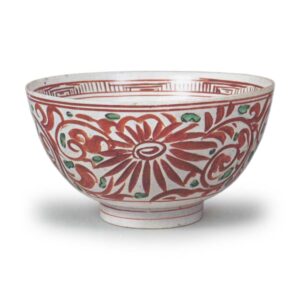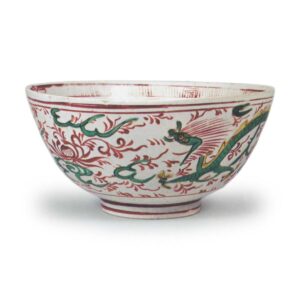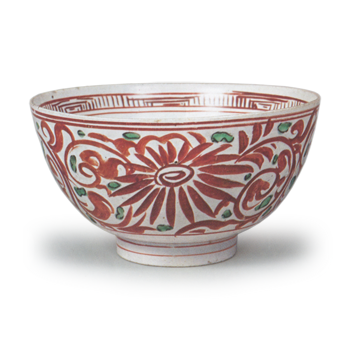

Height 9.1 cm, mouth diameter 19.2 cm, base diameter 7.4 cm
Tokyo National Museum
It is assumed that this type of porcelain was exported by the Dutch East India Company around the second year of the Manji period (1659). The design was influenced by the late Ming dynasty (1368-1644) Gosu red glaze, which was probably the most widely imported style from China at the time. A base of underglaze blue ware with a design similar to the dragon and phoenix design on the overglaze blue bowl has been excavated from an early Arita kiln site, and the shape of the bowl is also similar, suggesting that this type of ware was fired from the Shoho, Keian, Jououou, and Meireki periods. Most of the wares from the old kiln sites are in underglaze blue, but this piece is made of a rather plain white ground, which could be described as an early milky white hand, and painted with green and yellow overglaze enameling mainly in red. The brushwork is spontaneous and informal, and the vigorous style is a characteristic of early vessels only. Both vessels show a peony branch design on the prospective side, and the bowl with dragon and phoenix design in overglaze enamels has a phoenix on the reverse side.



